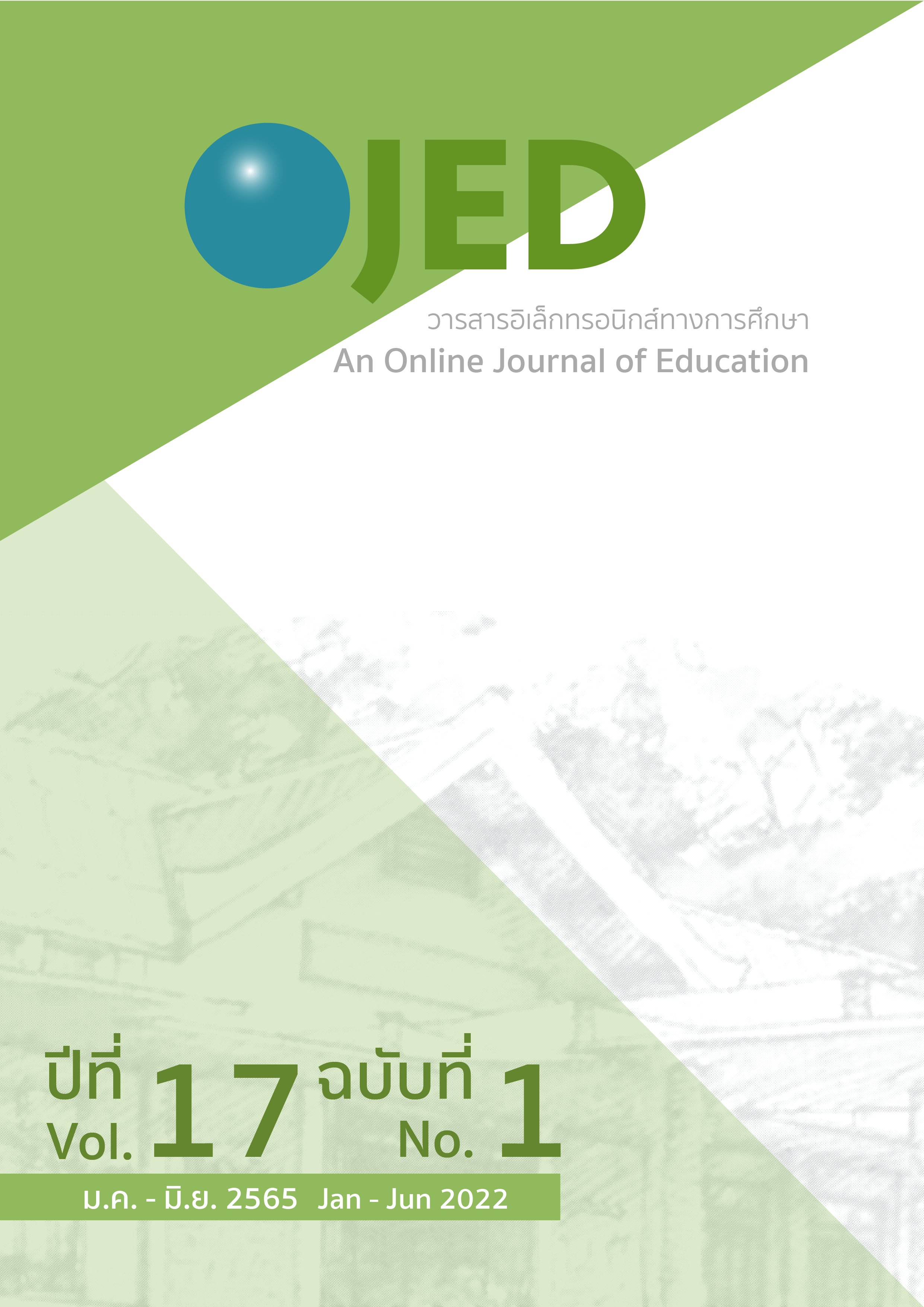An Implementation of Close Reading Instruction to Promote English Reading Comprehension of Secondary School Students
DOI:
https://doi.org/10.14456/ojed.2022.8Keywords:
Close Reading, reading strategies, English reading comprehensionAbstract
Close Reading has become a common means of helping improve readers’ comprehension of complex texts. This study implemented Close Reading instruction for Thai EFL secondary school students and explored their opinions towards Close Reading strategies.Eighteen secondary school students participated in the Close Reading instruction for eleven weeks and the effects on their English reading comprehension were examined. The research instruments were (1) English Reading Comprehension Test, (2) Close Reading Strategies Questionnaire, and (3) Semi-Structured Interview. Results from a paired sample t-test showed a significance level of .05, revealing that students significantly improved reading comprehension by participated in the Close Reading instruction. Almost all of them reread the texts, thought about the author’s intended meaning, and underlined difficult portions of texts that they encountered. According to the content analysis, students reported using the annotating strategy at the first reading for key ideas and details.
References
Ministry of Education Thailand. Basic education core curriculum B.E. 2551 (A.D. 2008). IPST Thailand (2017).
http://www.ipst.ac.th/images/2017/CoreCurriculum2551/EN.pdf
Mulatu, M., & Bezabih, W. (2018). Perceptions and Practices of EFL Teachers in Implementing Active Learning in English Classes: The Case of Three Selected Secondary Schools in Dawro Zone, Snnprs, Ethiopia. International Journal of Education, 10(2), 88-94. http://dx.doi.org/
Brewer, M. (2018). The Closer the Better? The Perils of an Exclusive Focus on Close Reading. Journal of Adolescent & Adult Literacy, 62(6), 635-642. https://doi.org/10.1002/jaal.938
Bunyakarte, T.J. (2008). A development of a business-oriented English reading course using content-based instruction and team-based learning to enhance the reading ability of EFL undergraduate students [Unpublished doctoral dissertation]. Chulalongkorn University.
EF Education First. (2020). The world’s largest ranking regions by English skills. https://www.ef.co.th/epi/
Education First Proficiency Index. (2020). Thailand. https://www.ef.com/wwen/epi/regions/asia/thailand/
Fisher, D., & Frey, N. (2012). Close Reading in Elementary Schools. The Reading Teacher, 66(3), 179-188. https://doi.org/10.1002/trtr.01117
Fisher, D., & Frey, N. (2015). Selecting Texts and Tasks for Content Area Reading and Learning. The Reading Teacher, 68(7), 524-529. https://doi.org/10.1002/trtr.1344
Grabe, W., & Jiang, X. (2018). First language and second language reading. In J.I. Liontas & M. DelliCarpini (Eds.), The TESOL encyclopedia of english language teaching. https://doi.org/10.1002/9781118784235.eelt0476
Hinchman, K. A., & Moore, D. W. (2013). Close Reading: A Cautionary Interpretation. Journal of Adolescent & Adult Literacy, 56(6), 441-450. https://doi.org/10.1002/jaal.163
Brown, S., & Kappes, L. (2012, October). Implementing the Common Core State Standards: A Primer on "Close Reading of Text". Reach Associates. http://www.reachassoc.net/library/files/A_Primer_of_Close_Reading_of_Text.pdf
Mokhtari, K. (2018). Prior Knowledge Fuels the Development of Reading Comprehension Strategies. In J.I. Liontas & M. DelliCarpini (Eds.), The TESOL Encyclopedia of English Language Teaching. https://doi.org/10.1002/9781118784235.eelt0488
Beers, K., & Probst, R.E. (2013). Notice & Note: Strategies for Close Reading. Heinemann USA.
Rattanamung, R. (2015). Grade 9 Students’ Use of Reading Strategies in an English Standard Test [Master’s independent study]. Thammasat University.
Santori, D., & Belfatti, M. (2017). Do Text-Dependent Questions Need to Be Teacher-Dependent? Close Reading from Another Angle. The Reading Teacher, 70(6), 649-657. https://doi.org/10.1002/trtr.1555
Shanahan on Literacy. (2012, June 18). What is Close Reading? https://shanahanonliteracy.com/blog/what-is-close-reading
Shanahan on Literacy. (2019, September 14). Why Not Teach Reading Comprehension for a Change? https://shanahanonliteracy.com/blog/why-not-teach-reading-comprehension-for-a-change
Shanahan, T. & August D. (2006). Developing Literacy in Second-Language Learners. Routledge.
Stone, G. (2017). Implementation of critical literacy for English writing classes in the Thai context. The New English Teacher, 11(2), 65-76.
Grabe, W. & Stoller, F.L. (2019). Teaching and Researching Reading (3rd ed.). Routledge.
Victor, L. (2017). How Close Reading Influences Reading Comprehension [Unpublished doctoral dissertation]. Arizona State University.
Yusuk, S. (2020). Perceptions and Practices of EFL School Teachers on Implementing Active Learning in Thai English Language Classrooms. THAITESOL Journal, 33(1), 36-56.
Downloads
Published
How to Cite
Issue
Section
License
Copyright (c) 2022 An Online Journal of Education

This work is licensed under a Creative Commons Attribution-NonCommercial-NoDerivatives 4.0 International License.




